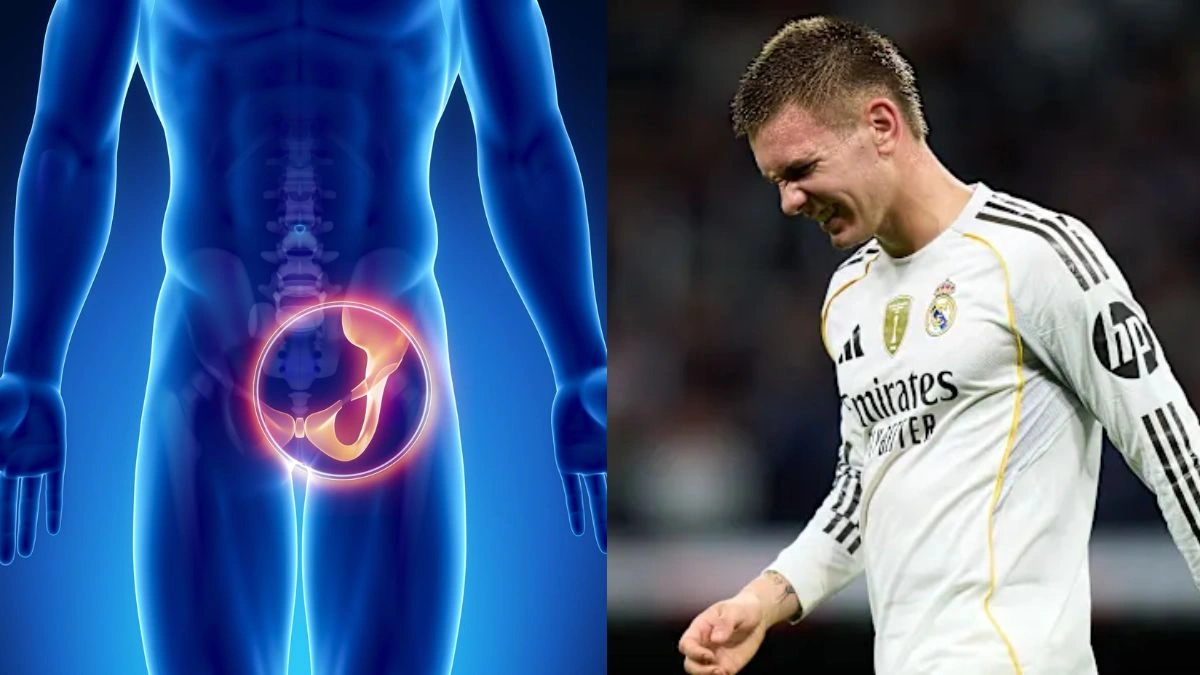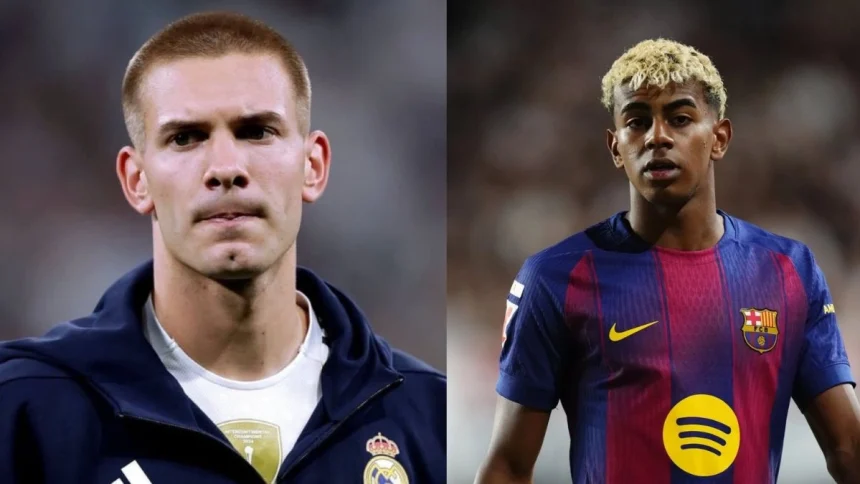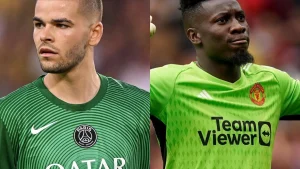Pubalgia in Football: Understanding the Injury Affecting Mastantuono, Yamal, and Nico Williams
A worrying trend has emerged in modern football, a surge in pubalgia injuries, also known as “sports hernias,” among young players. The latest to fall victim is Real Madrid’s teenage prodigy Franco Mastantuono, following similar diagnoses for Lamine Yamal and Nico Williams.
Once rare and largely misunderstood, pubalgia has now become one of the most prevalent soft-tissue injuries in elite football. As the physical demands of the game continue to rise, experts are warning that this condition could become a long-term concern for emerging talents unless training and recovery systems adapt quickly.
What Is Pubalgia?
Pubalgia commonly referred to as athletic pubalgia or a sports hernia is a soft-tissue injury that causes chronic pain in the lower abdomen or groin area. Despite its name, it is not a true hernia. Instead, it results from strain or tearing of the muscles, tendons, or ligaments that connect the lower abdomen to the pubic bone.
The injury is typically triggered by the kind of explosive and twisting movements common in football, sprinting, kicking, or quickly changing direction.
Common Symptoms Include:
- Persistent groin or lower abdominal pain during activity
- Pain that improves with rest but returns during training or matches
- Reduced power while sprinting or shooting
- No visible bulge, unlike a traditional hernia
Doctors describe it as a “hidden injury”, one that doesn’t always show up clearly in scans but can severely limit performance.
Why Pubalgia Is Becoming So Common Among Young Players
The rise in pubalgia cases among footballers, especially younger players, is not coincidental. Several interconnected factors are driving this trend in modern football:
1. Increased Physical Demands at Younger Ages
Today’s young footballers are expected to perform at elite levels earlier than ever before. Teenagers like Mastantuono and Yamal are playing high-intensity football against fully developed adults. The stress on their developing muscles and bones makes them far more susceptible to overuse injuries such as pubalgia.
2. Early Specialisation and Overload
Youth academies now demand year-round football with limited rest periods. Players often feature in domestic leagues, youth internationals, and senior matches, all within the same season. This overload, combined with limited recovery time, increases muscle fatigue and soft-tissue damage.
3. Biomechanical Imbalance
A common cause of pubalgia is a strength imbalance between the abdominal muscles and the adductors (inner thigh muscles). Younger players, still developing physically, may have uneven muscle growth that increases stress on the pelvic region during fast, twisting movements.
4. Growth and Development Factors
During adolescence, the pelvis and surrounding muscles are still adapting to physical growth. Rapid growth spurts can create misalignments and muscle imbalances that predispose players to groin and core-related injuries.
5. Fixture Congestion and Lack of Recovery
The packed football calendar means players, especially rising stars, rarely get adequate rest. Club and international commitments have pushed physical limits, and recovery is often sacrificed in favour of performance.
The Impact on Young Stars
The effects of pubalgia can be devastating for young footballers.
- Lamine Yamal, the Barcelona wonderkid, has been dealing with recurring pubalgia symptoms for months. According to reports, the injury “reduces almost 50% of his capacity” during games, affecting his explosiveness and dribbling.
- Nico Williams of Athletic Club suffered from similar issues earlier this year, forcing him to undergo an extended recovery period.
- Franco Mastantuono, Real Madrid’s latest rising star, has now joined the list. The club has confirmed that he will be sidelined indefinitely, with medical staff prioritising long-term rehabilitation over short-term return.
In all three cases, the players’ youth and high match exposure are seen as key contributors.
How Is Pubalgia Treated?
Treatment depends on the severity of the injury.
Conservative (Non-Surgical) Treatment:
- Rest and load management
- Physical therapy focused on strengthening the core and hip stabilisers
- Mobility work for the pelvis and adductor region
- Gradual return to play once pain subsides
Surgical Intervention:
If symptoms persist beyond 8-12 weeks, surgery may be required to repair damaged soft tissue or reinforce weakened abdominal walls. Modern procedures allow most athletes to return within 6-10 weeks post-surgery, but only if rehab is carefully managed.
For younger players, early diagnosis and rest are crucial to prevent chronic recurrence.
Why Clubs and Coaches Must Act Now
The spike in pubalgia cases among young stars highlights a growing issue in modern football, performance is outpacing development.

Top clubs and federations are under pressure to deliver results and nurture the next generation simultaneously. But pushing teenage bodies into adult-level workloads too soon risks long-term damage.
Sports medicine experts recommend:
- Load monitoring: Tracking minutes, intensity, and travel schedules
- Biomechanical screening: Identifying muscle imbalances early
- Individualised recovery plans: Giving each player adequate rest
- Education: Teaching young athletes about early warning signs of overuse injuries
Without such changes, the list of talented young players sidelined by preventable injuries could continue to grow.
What This Means for Football’s Future
The pubalgia trend is a warning sign for modern football. As the sport becomes faster and more intense, player welfare must evolve accordingly. Clubs can no longer view teenage prodigies as finished products ready for constant play, they are still developing, both physically and mentally.
For stars like Franco Mastantuono, Lamine Yamal, and Nico Williams, this period will be as much about recovery as it is about learning how to manage their bodies for the long term. The hope is that these setbacks become lessons not patterns, in the careers of the next generation.
FAQs
Q1. What is pubalgia in football?
A. Pubalgia, or sports hernia, is a soft-tissue injury in the groin and lower abdomen caused by strain or tearing of muscles and tendons.
Q2. Why is pubalgia common among footballers?
A. Football involves rapid twisting, sprinting, and kicking, all of which put heavy strain on the pelvic region, especially in players who train frequently without enough rest.
Q3. Can young players recover fully from pubalgia?
A. Yes, with proper rest, rehabilitation, and load management, most athletes return to full fitness. However, recurring cases are possible if the workload isn’t adjusted.
Q4. Is surgery always needed for pubalgia?
A. Not always. Most cases respond to physiotherapy and strengthening programs, but surgery may be necessary for severe or chronic injuries.
Q5. How can clubs prevent pubalgia?
A. By monitoring player workload, improving core conditioning, ensuring balanced strength development, and allowing proper recovery between matches.
Also Read- PSG In Crisis: What Dembélé, Hakimi And Doué’s Injury Means For Their Season Ahead





















